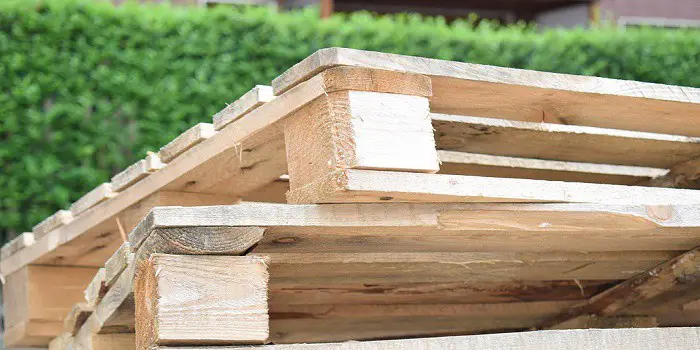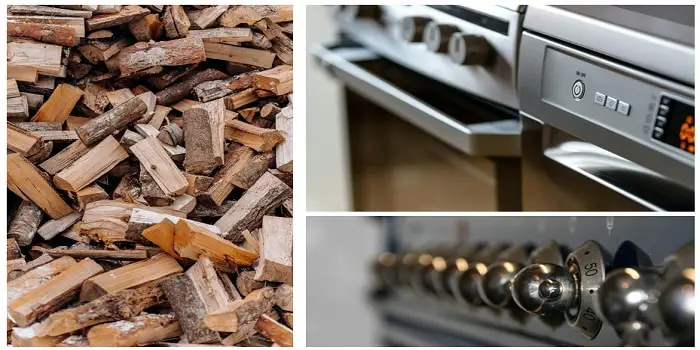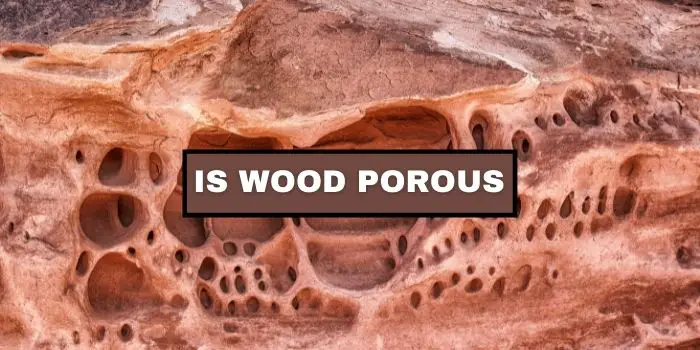
In most instances, wood is a porous material due to the fact that trees have pores that allow them to take in moisture and air.
Some woods that have denser qualities are only semi-porous, which is why density is also the determining feature as to whether or not a wood piece can float on water.
In general, the less dense a wood is, the more porous will it be in return.
Because there are many holes in the bark and branches that allow the wood to take in air and output oxygen, many believe that all wood is porous.
But is that necessarily true? Read on to learn more about wood and porosity.
Are All Types of Wood Porous?
The answer is both yes and no. In spite of their composition, some woods are porous, while others are not.
This may leave you wondering how this is possible or why this is the case. In order to answer the question, let’s first understand just what porosity means.
What is porosity all about?
When someone says something is porous, usually this indicates that the material is capable of penetrating air and water.
This means that if air or water can pass through the object, it is considered to be porous.
Otherwise, it is non-porous. In many cases, wood is porous due to the aforementioned pores that trees have so they can breathe.
Still, some woods are denser, making them semi-porous. The less density the wood has, the more porous it is.
On the contrary, denser wood tends to be non-porous. In conclusion, wood is often porous, but this is not universally true.
What Type of Wood is Non-Porous?
As we’ve mentioned, wood that is dense is often semi-porous or non-porous to an extent, though no wood is capable of being completely non-porous through and through.
Otherwise, the wood would not be able to get the necessary air and water, and it would die.
If wood is non-porous, this usually means that it doesn’t have many vessels or pores, so typically dense woods such as ironwood and ebony are not as porous as others.
There are ways to make wood non-porous, such as with special finishes like lacquers or varnishes that can seal up the wood.
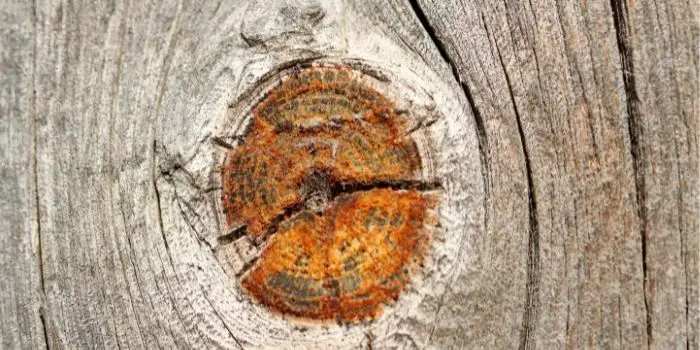
What are Ring-Porous and Diffuse-Porous Wood?
The vessels that form in ring-porous trees at the beginning of the growing season tend to be much larger than the vessels that form later on during the growing season.
Diffuse-porous trees generally have the same diameter vessels the entire growing season.
There are a few aspects of both ring-porous and diffuse-porous trees that make them different from one another.
Below, we will explore a few of these differences:
Ring-porous trees have much larger pores at the beginning of their life than at the end. Diffuse-porous trees tend to have vessels that are all the same diameter in the growth ring.
In ring-porous trees, the stem diameter starts to get larger just before leaves appear. When it comes to diffuse-porous trees, this occurs only after the leaves have begun to appear.
Cambial activity with diffuse-porous trees will begin right at the base of any winter buds and, over time, will slowly spread down.
The cell division that happens here does so more quickly in ring-porous trees than it does in diffuse-porous trees.
Cell division at the bottom of the stem starts easier in ring-porous trees. Often, this means it happens either at the same time as the buds begin to or a few days before this occurs.
When it comes to diffuse-porous trees, this does not happen the same way. Instead, the cell division that occurs at the base of the stem does not happen until later.
Usually, this division will occur once the foliage has either completely expanded or partially expanded.
Being Porous Can Wood Sink in Water – Or Will It Always Float?
It is true that most types of wood have a lesser density compared to water. That is why most wood will float in water.
Generally, it’s the porous nature of the wood that will keep it floating on the surface.
However, there are types of wood that have a greater density compared to water and will sink. This means that it all comes down to the density of the wood in determining whether it will float or not.
Density and Specific Gravity
Density is the amount of mass a material contains per unit volume. This is generally measured in grams per cubic centimeter, also known as g/c3.
Pure water at room temperature will have a density of 1 g/c3. Density can also be described as specific gravity.
Therefore, wood that has the same density of pure water at room temperature will also be stated as 1 g/c3.
The wood of greater density will have a higher number, while wood that is less dense will have a lower number.
If the wood has a specific gravity that is greater than 1 or at least 1 g/c3, then it will float. This does depend on the content of the water.
Plus, the specific gravity of the wood assumes it has been oven-dried as that contains less moisture. The more moisture in the wood, the higher the density will be.
Porosity and Moisture Content
Of course, wood that has absorbed a considerable amount of water may also become too dense to float.
The buoyancy of wood can be affected by the following conditions.
a) Quality of the Water:
In the Dead Sea, for example, people can float easily because of the high salt content.
b) Pests:
Insects such as termites for example will dig holes into the wood. This not only makes the tree less dense it also may turn it rotten as well.
c) Sap:
Trees gain density when it starts to produce sap. This creates more weight in the tree and thus makes it denser.
There are other factors as well that can affect the density of the wood. This means that under some circumstances wood may float in some types of water and sink in other types.
Wood Consists of Different Elements
The cellulose and lignin which make up the plant cell walls tend to be 1.5 g/c3.
While the porous areas of the wood tend to be much lower in terms of specific gravity.
And since the tree itself can vary in terms of porous materials and elements, its specific gravity is not consistent.
Because of this, most woods are less dense than water and will float. But there are exceptions. Such woods and trees are noted for their overall weight.
Wood Types that are Denser than Water and Can Sink
The ironwood, for example, is a hardwood tree and is noted for its density as its name implies.
This means that if you were to cut off a section of desert ironwood and drop it into the water, it would under most circumstances sink right to the bottom.
A few other kinds of wood that have sufficient density to sink in water include Ebony, Pau d’arco, Lignum Vitae, Knob Thorn, and Quebracho.
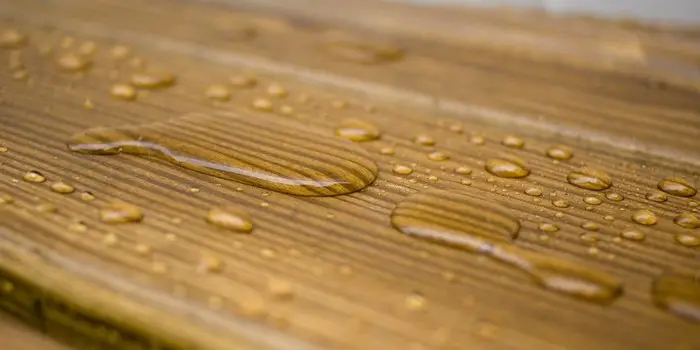
Related FAQs:
What is considered to be a porous surface?
A porous surface is one that contains tiny holes or voids. The size of these voids will determine how easily liquids, gases, and even solids can pass through the wood.
The porosity of wood is often determined by its type of grain. Open-grained woods have a more visible grain pattern and are typically more porous than closed-grained woods.
Porosity can also be affected by the environment in which the tree grew. For example, a tree that grew in a dry climate is more likely to have smaller pores and be less porous than a tree from a wetter climate.
Is plywood board a porous surface?
Plywood is a manufactured wood product made by gluing together thin layers of wood veneer.
The veneers used in plywood are often very thin, and the glue that holds them together can make the surface of the plywood somewhat water-resistant.
However, because plywood is made up of multiple thin layers of wood, it is still considered to be a porous surface.
If you are looking for a more water-resistant option, you may want to consider using MDF or particle board. These materials are made from compressed sawdust and have a much denser surface that is less likely to absorb liquids.
Painted wood and laminates are also non-porous, as it does not have pores (or the pores are filled) that can absorb the liquids.
The paint on the wood allows liquids to pass through it, but they are trapped beneath it, so your wooden items will not be harmed if you utilize painted wood for furniture or decoration.
Is rough-cut wood more porous than smooth-cut?
Rough-cut wood is wood that has been cut with a saw or other tool without first being planed or sanded smooth.
The surface of rough-cut wood will typically have a more textured, rustic appearance than smooth-cut wood.
Rough-cut wood is more likely to be porous than smooth-cut wood because the saw blade or other tool leaves behind tiny voids and holes in the wood.
These voids and holes can allow liquids, gases, and even solids to pass through the wood more easily.
Final Thoughts: Whether the Wood a Porous or Non-Porous?
Because wood may be both porous and non-porous, we cannot simply respond with yes or no.
Our planet contains an infinite amount of wood. Some are porous while others are not.
Generally, it has been seen that hardwoods are the most common type of porous wood, whereas softwoods are the most typical form of non-porous wood.
So, if you are working with wood or even thinking about it, take the time to determine if the wood is porous or not.
In the end, it might just save you a lot of time, money, and effort.

Hi, I am Mark Garner a professional carpenter, woodworker, and DIY painter. I live in the small city of Peoria, Arizona as a semi-retired woodworker. I have started this blog with a simple motive to help you with my wood experience in this sector. If you like to know more about what I love doing and how it all got started, you can check more about me here.

